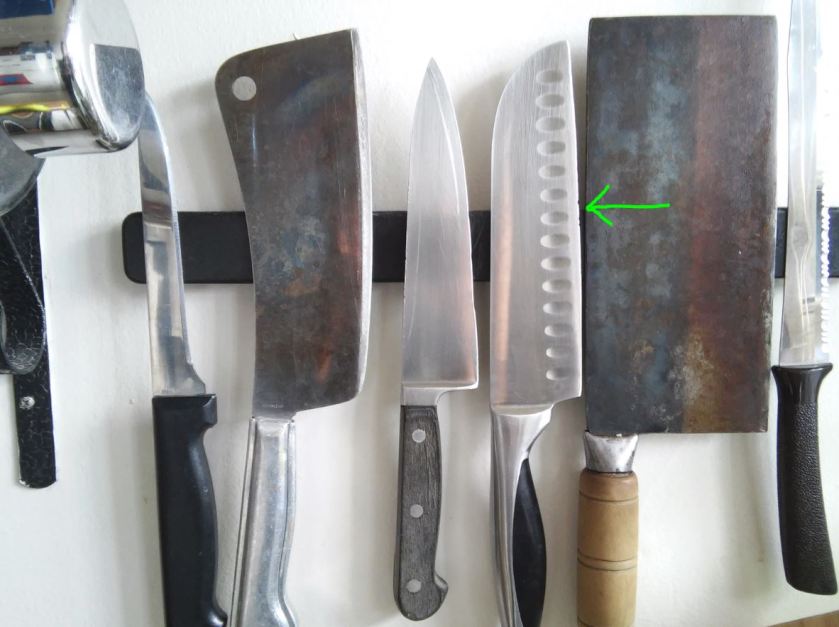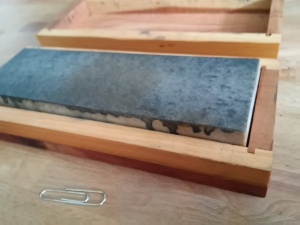Why Knives Chip and What to Do About It
I recently found this knife of ours had become chipped pretty badly. I didn’t care all that much. Not only was it a castoff from a friend who’d downsized her kitchen. It was just a $40 item from Chicago Cutlery. Had the chipping appeared on our $140 Wusthof chef’s knife, I would have cared a lot.
This knife? Nah. When I found it chipped, I sneered briefly planned obsolescence. My Filipino parents would say of this scenario sayang, as in, What a waste.
Turns out, I should have been sayang-ing at myself. The chipping wasn’t caused by cheap, flawed steel or poor quality control. It was me.
After hand-washing my knives, I stand them on edge to air dry. I learned somewhere that air-drying is best for keeping knives sterile after washing.
Turns out, air-drying is perfect — if you want droplets of water to collect on the cutting edge, weakening the steel as they slowly evaporate. Then, when sharpened, the weak spots flake rather than grind. Hence, the chips.
Now for the happy ending.
By chance in an airport lounge, I learned of my errant ways from The Today Show. A quick Google search then led me to this YouTube tutorial. Have a look-see at how to easily repair a chipped knife.
For regular-maintenance sharpening, I’d been using a rolling-wheel sharpener (below). Bad. Not only is the grain to coarse. Its design makes it impossible to keep a consistent grinding angle. This contributes to the chipping–this blunt instrument (as it were) wreaking havoc on the weakened steel. We do have a rarely used whetstone. I’d never used it because the user manual insists on a technique that’s slow to the point of absurdity. (“Pull the knife toward you five times, for two seconds each time. Then reverse directions, away five times. Repeat this alternating cycle fifty to one hundred times.”)
Wrong! The whetstone used Murray-Carter style (GIF-image, above) is actually a real pleasure. And fast, too.




